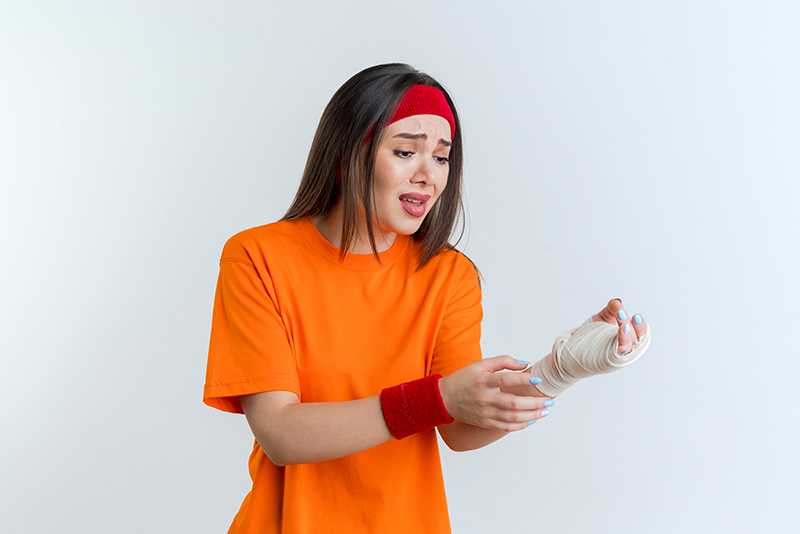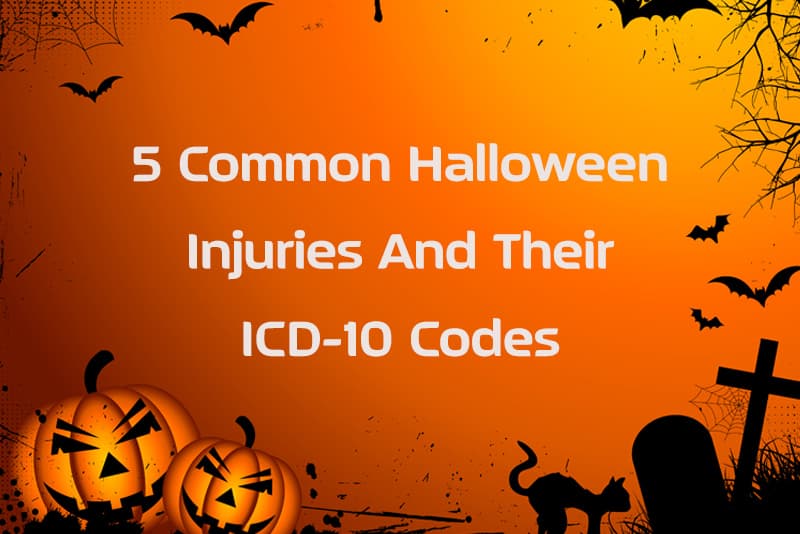Halloween is a time of fun, treats, costumes and parties. But, it’s also a time to watch out for injuries and dangerous accidents. Injuries can be caused by costumes that interrupt eye vision, accidents due to drunk or distracted driving, falls, food poisoning or even burns in fireplaces or kitchens. Such injuries often require immediate access to emergency room services. Major challenges associated with emergency room medical coding include complications of surgery, uncertain diagnosis and treatment plan not carried out. Medical billing and coding companies help ER physicians submit accurate and timely claims for diagnosing and treating holiday injuries.

Common Halloween related injuries and their ICD-10 Codes
- Trips and falls Halloween-related injuries mainly involve trips and falls caused by hanging decorations, costumes, or while walking on uneven surfaces when trick-or-treating. Falls could result in foot and ankle injuries, wrist fractures, broken bones, traumatic brain injuries (TBIs), knee damages, spinal cord injuries and more. Choosing comfortable costumes and masks that do not affect visibility can reduce risk of trips and falls, which can be particularly harmful for older adults.
- W01 Fall on same level from slipping, tripping and stumbling
- W01.0 Fall on same level from slipping, tripping and stumbling without subsequent striking against object
- W01.1 Fall on same level from slipping, tripping and stumbling with subsequent striking against object
- W01.10 ——— against unspecified object
- W01.11 ———against sharp object
- W01.110 ———against sharp glass
- W01.111 ———against power tool or machine
- W01.118 ———against other sharp object
- W10 Fall on and from stairs and steps
- W11 Fall on and from ladder
-
- W11.XXXA Fall on and from ladder, initial encounter
- W11.XXXD Fall on and from ladder, subsequent encounter
- W11.XXXS Fall on and from ladder, sequela
- W01 Fall on same level from slipping, tripping and stumbling
- Lacerations and cuts These injuries are mainly related to pumpkin carving. Large knives and other tools used to carve pumpkins can cause cuts and wounds. According to the Consumer Product Safety Commission (CPSC), 48% of Halloween-related injuries involve pumpkin carving.
- S01 Open wound of head
- S01.0 Open wound of scalp
- S01.1 Open wound of eyelid and periocular area
- S01.2 Open wound of nose
- S01.3 Open wound of ear
- W26 Contact with other sharp objects
- W26.0 Contact with knife
- W26.8 Contact with other sharp object(s), not elsewhere classified
- W27 Contact with nonpowered hand tool
- W27.2 Contact with scissors
- W27.4 Contact with kitchen utensil
- S01 Open wound of head
- Burns and eye injuries Caps, wigs, masks and flowing cotton costumes can catch fire. Wearing costumes and accessories made of flame resistant material is recommended. Sharp edges of accessories can cause eye injuries.
- S05 Injury of eye and orbit
- S05.0 Injury of conjunctiva and corneal abrasion without foreign body
- S05.1 Contusion of eyeball and orbital tissues
- S05.2 Ocular laceration and rupture with prolapse or loss of intraocular tissue
- S05.3 Ocular laceration without prolapse or loss of intraocular tissue
- S05.4 Penetrating wound of orbit with or without foreign body
- S05.5 Penetrating wound with foreign body of eyeball
- T30 Burn and corrosion, body region unspecified
- T31 Burns classified according to extent of body surface involved
- T31.0 Burns involving less than 10% of body surface
- T31.1 Burns involving 10-19% of body surface
- T31.2 Burns involving 20-29% of body surface
- T31.9 Burns involving 90% or more of body surface
- S05 Injury of eye and orbit
- Food poisoning Candies collected from trick-or-treating can be unsafe. It is important to be careful and never consume anything that looks odd or smells odd.
- A05 Other bacterial foodborne intoxications, not elsewhere classified
- A05.0 Foodborne staphylococcal intoxication
- A05.1 Botulism food poisoning
- A05.2 Foodborne Clostridium perfringens [Clostridium welchii] intoxication
- A05.3 Foodborne Vibrio parahaemolyticus intoxication
- A05.4 Foodborne Bacillus cereus intoxication
- A05.5 Foodborne Vibrio vulnificus intoxication
- A05.8 Other specified bacterial foodborne intoxications
- A05.9 Bacterial foodborne intoxication, unspecified
- A05 Other bacterial foodborne intoxications, not elsewhere classified
- Traffic accidents Pedestrian accidents and drunken driving accidents are quite common when crossing the street during trick or treating. Dark costumes can make it hard for drivers see pedestrians. Drivers must drive slowly, avoid alcohol, and be aware of their surroundings when driving on Halloween night.
- V89 Motor- or nonmotor-vehicle accident, type of vehicle unspecified
- V89.2 Person injured in unspecified motor-vehicle accident, traffic
- V89.9 Person injured in unspecified vehicle accident
- V03 Pedestrian injured in collision with car, pick-up truck or van
- V03.0 Pedestrian injured in collision with car, pick-up truck or van in nontraffic accident
- V03.1 Pedestrian injured in collision with car, pick-up truck or van in traffic accident
- V89 Motor- or nonmotor-vehicle accident, type of vehicle unspecified
Professional medical coding companies can help physicians report the applicable codes for Halloween-related injuries and ensure error-free claim submission.




